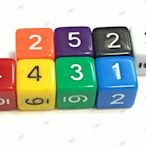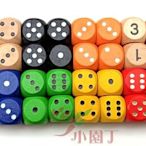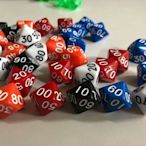搜尋結果
 $10小園丁兒童教育用品社 桌遊配件 六面 6面數字骰子 dice小園丁兒童教育用品社
$10小園丁兒童教育用品社 桌遊配件 六面 6面數字骰子 dice小園丁兒童教育用品社 $7小園丁兒童教育用品社 桌遊配件 1.6 公分彩色點數骰子 木頭骰子 7Y 10Y dice小園丁兒童教育用品社
$7小園丁兒童教育用品社 桌遊配件 1.6 公分彩色點數骰子 木頭骰子 7Y 10Y dice小園丁兒童教育用品社![[美]骰子 6面 點點 圓角 實色 骰子(5顆+收納盒)適用 紙牌 桌遊 送禮 國粹 依夏蘭 武騰 MTG [美]骰子 6面 點點 圓角 實色 骰子(5顆+收納盒)適用 紙牌 桌遊 送禮 國粹 依夏蘭 武騰 MTG](https://s.yimg.com/fz/api/res/1.2/I1PDGgPArCDXpC23wjicuQ--~C/YXBwaWQ9c3JjaGRkO2ZpPWZpbGw7aD0xNDY7cT04MDt3PTE0Ng--/https://ct.yimg.com/xd/api/res/1.2/m8u5xFsEUcmUNmiAHTYA9w--/YXBwaWQ9eXR3YXVjdGlvbnNlcnZpY2U7aD0yNzk7cT04NTtyb3RhdGU9YXV0bzt3PTQwMA--/https://s.yimg.com/ob/image/81eaaa97-d293-41f3-936e-b5f2f88be60e.jpg) $65[美]骰子 6面 點點 圓角 實色 骰子(5顆+收納盒)適用 紙牌 桌遊 送禮 國粹 依夏蘭 武騰 MTG卡片 週邊專賣
$65[美]骰子 6面 點點 圓角 實色 骰子(5顆+收納盒)適用 紙牌 桌遊 送禮 國粹 依夏蘭 武騰 MTG卡片 週邊專賣 $10【美】骰子 10面 倍數 實色 骰子(單顆)桌遊 紙牌週邊 教學 文具 觀賞卡片 週邊專賣
$10【美】骰子 10面 倍數 實色 骰子(單顆)桌遊 紙牌週邊 教學 文具 觀賞卡片 週邊專賣![小園丁 桌遊配件 6 面透明點數骰子 7Y 10Y dice 小園丁 桌遊配件 6 面透明點數骰子 7Y 10Y dice]() $5小園丁 桌遊配件 6 面透明點數骰子 7Y 10Y dice小園丁兒童教育用品社
$5小園丁 桌遊配件 6 面透明點數骰子 7Y 10Y dice小園丁兒童教育用品社![(I LOVE樂多)預購 METALIZE 骰子項鍊 銀銅 old school (I LOVE樂多)預購 METALIZE 骰子項鍊 銀銅 old school]() $880(I LOVE樂多)預購 METALIZE 骰子項鍊 銀銅 old schoolI LOVE樂多
$880(I LOVE樂多)預購 METALIZE 骰子項鍊 銀銅 old schoolI LOVE樂多![【美】骰子 8面菱形骰子(單顆)桌遊 紙牌週邊 文具 教學 幼教 龍與地下城 D4 紙牌週邊 【美】骰子 8面菱形骰子(單顆)桌遊 紙牌週邊 文具 教學 幼教 龍與地下城 D4 紙牌週邊]() $10【美】骰子 8面菱形骰子(單顆)桌遊 紙牌週邊 文具 教學 幼教 龍與地下城 D4 紙牌週邊卡片 週邊專賣
$10【美】骰子 8面菱形骰子(單顆)桌遊 紙牌週邊 文具 教學 幼教 龍與地下城 D4 紙牌週邊卡片 週邊專賣![骰子 13.8mm 麻將骰子 比大小 大小點 夜店 酒吧 ktv 桌遊 必備聖品 骰子 13.8mm 麻將骰子 比大小 大小點 夜店 酒吧 ktv 桌遊 必備聖品]() $2骰子 13.8mm 麻將骰子 比大小 大小點 夜店 酒吧 ktv 桌遊 必備聖品阿春娛樂-德州撲克、百家樂籌碼
$2骰子 13.8mm 麻將骰子 比大小 大小點 夜店 酒吧 ktv 桌遊 必備聖品阿春娛樂-德州撲克、百家樂籌碼![小園丁兒童教育用品社 桌遊 配件 三角形 四面 4面數字骰子 7Y 10Y dice 小園丁兒童教育用品社 桌遊 配件 三角形 四面 4面數字骰子 7Y 10Y dice]() $10小園丁兒童教育用品社 桌遊 配件 三角形 四面 4面數字骰子 7Y 10Y dice小園丁兒童教育用品社
$10小園丁兒童教育用品社 桌遊 配件 三角形 四面 4面數字骰子 7Y 10Y dice小園丁兒童教育用品社![[MAGIC 999]魔術道具~大魔競 陳日昇 渾沌骰子!不可思議的點數變換-特賣500NT [MAGIC 999]魔術道具~大魔競 陳日昇 渾沌骰子!不可思議的點數變換-特賣500NT]() $500[MAGIC 999]魔術道具~大魔競 陳日昇 渾沌骰子!不可思議的點數變換-特賣500NTMAGIC999
$500[MAGIC 999]魔術道具~大魔競 陳日昇 渾沌骰子!不可思議的點數變換-特賣500NTMAGIC999![小園丁兒童教育用品社 桌遊配件 20面數字骰子 7Y 10Y dice 小園丁兒童教育用品社 桌遊配件 20面數字骰子 7Y 10Y dice]() $20小園丁兒童教育用品社 桌遊配件 20面數字骰子 7Y 10Y dice小園丁兒童教育用品社
$20小園丁兒童教育用品社 桌遊配件 20面數字骰子 7Y 10Y dice小園丁兒童教育用品社![小園丁兒童教育用品社 桌遊配件 6面點數骰子(1.6公分) dice 小園丁兒童教育用品社 桌遊配件 6面點數骰子(1.6公分) dice]() $10小園丁兒童教育用品社 桌遊配件 6面點數骰子(1.6公分) dice小園丁兒童教育用品社
$10小園丁兒童教育用品社 桌遊配件 6面點數骰子(1.6公分) dice小園丁兒童教育用品社
Four traditional dice showing all six different sides. Dice of different sizes being thrown in slow motion. Dice (sg.: die or dice) are small, throwable objects with marked sides that can rest in multiple positions. They are used for generating random values, commonly as part of tabletop games, including dice games, board games, role-playing games, and games of chance.
Dice-Sørensen coefficient. The Dice-Sørensen coefficient (see below for other names) is a statistic used to gauge the similarity of two samples. It was independently developed by the botanists Lee Raymond Dice [1] and Thorvald Sørensen, [2] who published in 1945 and 1948 respectively.
What links here Related changes Upload file Special pages Permanent link Page information Cite this page Get shortened URL Download QR code Dice notation (also known as dice algebra, common dice notation, RPG dice notation, and several other titles) is a system to represent different combinations of dice in wargames and tabletop role-playing games using simple algebra-like notation such as d8+2.
3×six-sided dice. Cee-lo is a gambling game played with three six-sided dice. There is not one standard set of rules, but there are some constants that hold true to all sets of rules. The name comes from the Chinese Sì-Wŭ-Liù (四五六), meaning "four-five-six". In America it is also called "See-Low," "Four-Five-Six," "The Three Dice Game ...
Example An example of intransitive dice (opposite sides have the same value as those shown). Consider the following set of dice. Die A has sides 2, 2, 4, 4, 9, 9. Die B has sides 1, 1, 6, 6, 8, 8. Die C has sides 3, 3, 5, 5, 7, 7. The probability that A rolls a higher number than B, the probability that B rolls higher than C, and the probability that C rolls higher than A are all 5 / 9, so ...
In probability theory, the law of large numbers ( LLN) is a mathematical theorem that states that the average of the results obtained from a large number of independent random samples converges to the true value, if it exists. [1] More formally, the LLN states that given a sample of independent and identically distributed values, the sample ...
Dice chess. Dice chess can refer to a number of chess variants in which dice are used to alter gameplay; specifically that the moves available to each player are determined by rolling a pair of ordinary six-sided dice. There are many different variations of this form of dice chess. [1] One of them is described here.





![[MAGIC 999]魔術道具~大魔競 陳日昇 渾沌骰子!不可思議的點數變換-特賣500NT [MAGIC 999]魔術道具~大魔競 陳日昇 渾沌骰子!不可思議的點數變換-特賣500NT](https://s.yimg.com/fz/api/res/1.2/PRJ6vP1OhEV9DYtnefXwKg--~C/YXBwaWQ9c3JjaGRkO2ZpPWZpbGw7aD0xNDY7cT04MDt3PTE0Ng--/https://ct.yimg.com/xd/api/res/1.2/4Py1iaiwisANeaPGa9FdeA--/YXBwaWQ9eXR3YXVjdGlvbnNlcnZpY2U7aD0zMDA7cT04NTtyb3RhdGU9YXV0bzt3PTQwMA--/https://s.yimg.com/ob/image/c6d19f25-c9c4-4539-a57e-4b2fb5cd4165.jpg)


